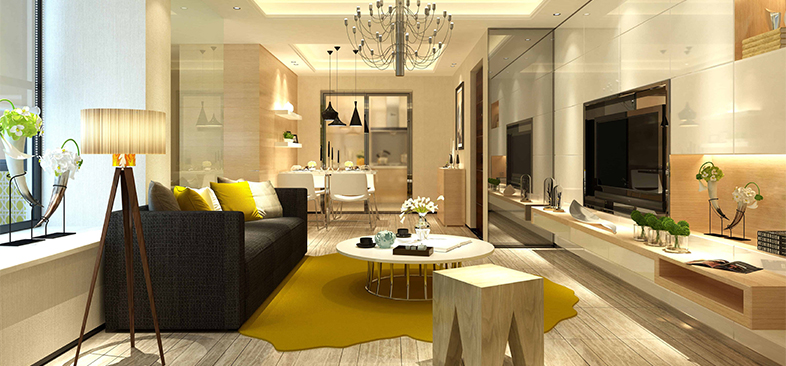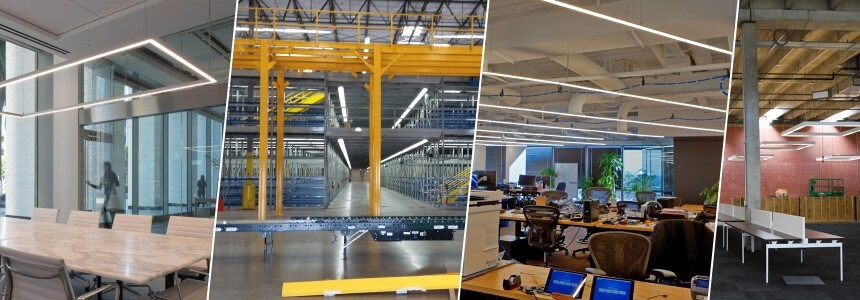LED Lights
Shining a Light on LED Technology: How LED Lights are Revolutionizing the Way We Illuminate our Lives
In an age of constant innovation, LED technology has emerged as a game-changer in the field of lighting. From their humble beginnings as indicator lights on electronic devices, LEDs (light-emitting diodes) have evolved into a versatile and energy-efficient lighting solution that is revolutionizing the way we illuminate our lives. With their small size, long lifespan, and low power consumption, LEDs are quickly replacing traditional incandescent and fluorescent lights in homes, businesses, and public spaces.

PASHA Energy LED Lights
The benefits of LED lights go beyond just energy efficiency. They provide greater flexibility in terms of design and functionality, allowing for more creative and versatile lighting solutions. LEDs also emit less heat, making them a safer option for both indoor and outdoor use.
LED lights can be found in a wide range of applications, from residential lighting fixtures to automotive headlights and even stadium lighting. Their ability to produce bright and high-quality light has made them a popular choice for retail displays, architectural lighting, and even stage productions.
As society continues its focus on sustainability and energy efficiency, LED technology is set to play a crucial role in shaping the future of illumination. With their numerous advantages and increasing affordability, it’s clear that LEDs are here to stay, shining a new light on how we brighten our world.
Advantages of LED lights
LED lights offer numerous advantages over their traditional counterparts. One of the most significant benefits is their energy efficiency. LEDs are highly efficient at converting electrical energy into light, making them much more energy-efficient than incandescent and fluorescent lights. This not only saves on electricity bills but also reduces carbon emissions and helps combat climate change.
Another advantage of LED lights is their longevity and durability. LED bulbs have an exceptionally long lifespan, often lasting up to 50,000 hours or more. This means that LED lights rarely need to be replaced, reducing maintenance and replacement costs. Additionally, LEDs are more resistant to shock, vibration, and extreme temperatures, making them ideal for use in outdoor environments and industrial settings.
LED lights also offer greater flexibility in terms of design and functionality. Unlike traditional bulbs, LEDs are small and compact, allowing for more creative and versatile lighting solutions. They can be easily integrated into various fixtures, such as recessed, track, and even decorative lighting. LEDs also come in a variety of colors, allowing for colorful and dynamic lighting effects. This flexibility in design makes LED lights perfect for creating the desired ambiance in any space.
Different applications of LED lights
LED lights can be found in a wide range of applications, highlighting their versatility and adaptability. In residential settings, LED lights are commonly used in fixtures such as ceiling lights, table lamps, and under-cabinet lighting. They provide bright and efficient illumination while consuming significantly less energy than traditional bulbs. LED lights are also a popular choice for outdoor lighting, including landscape lighting, pathway lighting, and security lighting. Their durability and resistance to weather conditions make them ideal for withstanding the elements.
In commercial settings, LED lights are increasingly being used for their aesthetic appeal and energy efficiency. Retail stores often use LED lighting to highlight products and create an inviting atmosphere for customers. LEDs can produce high-quality light that showcases products in their true colors, enhancing the shopping experience. Additionally, LEDs are commonly used for architectural lighting, both indoors and outdoors, to highlight the unique features of buildings and create visually striking environments.
LED lights have also made a significant impact on the automotive industry. LED headlights are becoming increasingly popular due to their superior brightness and energy efficiency compared to traditional halogen headlights. LED headlights provide better visibility on the road, improving safety for both drivers and pedestrians. Additionally, LEDs are used in taillights, brake lights, and turn signals, providing clear and easily distinguishable signals to other drivers on the road.
Environmental benefits of LED lights
LED lights have significant environmental benefits compared to traditional lighting options. As mentioned earlier, LEDs are extremely energy-efficient, consuming much less electricity than incandescent and fluorescent lights. This reduced energy consumption translates into lower greenhouse gas emissions and helps to conserve natural resources. By choosing LED lights, individuals and businesses can contribute to global efforts to mitigate climate change and promote sustainability.]
LED lights also have a positive impact on the environment in terms of waste reduction. Due to their long lifespan, LED bulbs need to be replaced less frequently than traditional bulbs. This results in fewer discarded bulbs ending up in landfills, reducing the amount of electronic waste generated. LED lights are also free from hazardous substances such as mercury, which is commonly found in fluorescent lights. This makes LED lights safer to handle and dispose of, further reducing their environmental impact.
Choosing the right LED lights for your needs
When it comes to choosing LED lights, it’s essential to consider your specific needs and requirements. There are several factors to consider, including the desired brightness, color temperature, and beam angle. The brightness of an LED light is measured in lumens, with higher lumens indicating a brighter light output. It’s important to select LED lights with an appropriate lumen rating for the intended application.
The color temperature of LED lights determines the warmth or coolness of the light produced. Lower color temperature values, around 2700-3000K, produce a warm white light that is similar to traditional incandescent bulbs. Higher color temperature values, around 5000-6500K, produce a cool white light that is often used in commercial and outdoor settings. Choosing the right color temperature can help create the desired ambiance and atmosphere in your space.
The beam angle of an LED light determines the spread of light emitted. A narrower beam angle, around 20-30 degrees, is suitable for spotlighting specific objects or areas. A wider beam angle, around 60-120 degrees, is ideal for general lighting and even illumination across a larger area. Consider the intended use of the LED lights to determine the appropriate beam angle.
Longevity and durability of LED lights
One of the key advantages of LED lights is their exceptional longevity and durability. Unlike incandescent bulbs, which have a relatively short lifespan, LEDs can last for up to 50,000 hours or more. This means that once you install an LED light, you won’t have to worry about replacing it for many years to come. This not only saves you money on bulb replacements but also reduces the environmental impact of manufacturing and disposing of traditional light bulbs.
LED lights are also highly durable. They are resistant to shock, vibration, and temperature changes, making them ideal for outdoor use in harsh environments. Traditional bulbs are fragile and can easily break if mishandled, but LEDs are much more robust and can withstand rough handling without any damage. This makes them a practical choice for applications such as street lighting, where the lights may be exposed to the elements and potential vandalism.
In addition to their longevity and durability, LED lights are also more energy-efficient than traditional lighting options. LEDs convert most of the energy they consume into light, with very little wasted as heat. This is in stark contrast to incandescent bulbs, which emit a significant amount of heat and are highly inefficient. By switching to LED lights, you can significantly reduce your energy consumption and lower your electricity bills.
LED lights for residential use
LED lights have become increasingly popular in residential settings due to their numerous benefits. In addition to their energy efficiency and long lifespan, LEDs offer homeowners greater flexibility in terms of design and functionality. LED technology allows for creating lighting fixtures in a wide range of shapes and sizes, making it easier to incorporate them into different areas of the home.

LEDs also offer a wide spectrum of color options, allowing homeowners to create different moods and atmospheres in their living spaces. From warm and cozy lighting for the bedroom to bright and cool lighting for the kitchen, LEDs can be tailored to suit individual preferences and needs. Some LED lights even come with dimming capabilities, allowing for further customization of the lighting intensity.
Another advantage of LED lights for residential use is their ability to provide instant brightness. Unlike traditional bulbs that take a few seconds to reach full brightness, LEDs illuminate instantly when switched on. This is particularly useful in areas such as hallways and staircases where immediate illumination is essential for safety.
LED lights are also ideal for outdoor use in residential settings. Their low power consumption and durability make them a practical choice for landscape lighting, security lighting, and even pool lighting. LED lights can withstand exposure to the elements and provide consistent and reliable illumination throughout the year.
LED lights for commercial use
LED lights are not only transforming residential lighting but also revolutionizing the commercial lighting industry. Businesses are increasingly adopting LED technology for its numerous advantages, including energy efficiency, cost savings, and enhanced lighting quality.

One major benefit of LED lights for commercial use is their ability to provide bright and high-quality light. LEDs produce a more focused and directional light compared to traditional bulbs, making them ideal for task lighting and highlighting specific areas or products. This makes them a popular choice for retail displays, where precise and vibrant lighting is crucial for showcasing merchandise and attracting customers.
LED lights are also well-suited for architectural lighting in commercial buildings. Their small size and versatility allow them to be seamlessly integrated into building facades, highlighting architectural features and creating visually stunning effects. LED technology offers architects and designers greater creative freedom in illuminating and enhancing the aesthetic appeal of commercial spaces.
Additionally, LED lights are an excellent choice for large-scale lighting applications, such as stadiums and arenas. LED stadium lighting provides bright and uniform illumination, enhancing visibility for both players and spectators. LED lights also have the advantage of instant on/off capabilities, eliminating the need for warm-up time and allowing for dynamic lighting effects during events.
Conclusion: The future of LED technology
As society continues its focus on sustainability and energy efficiency, LED technology is set to play a crucial role in shaping the future of illumination. With their numerous advantages and increasing affordability, it’s clear that LEDs are here to stay, shining a new light on how we brighten our world.
LED lights have come a long way since their humble beginnings as indicator lights on electronic devices. They have evolved into a versatile and energy-efficient lighting solution that offers numerous benefits over traditional lighting options. From their exceptional longevity and durability to their flexibility in design and functionality, LED lights are revolutionizing the way we illuminate our lives.
In the residential sector, LED lights are providing homeowners with greater control and customization options for their lighting needs. With their energy efficiency, long lifespan, and instant brightness, LEDs are ideal for creating different moods and atmospheres in living spaces, both indoors and outdoors.
In the commercial sector, LED lights are transforming the way businesses light up their spaces. From retail displays to architectural lighting and large-scale stadium lighting, LEDs offer enhanced lighting quality, cost savings, and creative possibilities for designers and architects.
As LED technology continues to advance, we can expect even greater innovations in the field of lighting. From smart lighting systems that can be controlled remotely to further improvements in energy efficiency, the future of LED technology looks bright. With their numerous advantages and positive impact on energy consumption, LEDs are paving the way for a more sustainable and illuminated future.

So the next time you flip a switch and witness the brilliance of an LED light, remember the journey that led to this revolutionary lighting solution. LED technology is illuminating our lives in more ways than one, and it’s only getting brighter from here. For Wholesale or corporate orders, you can contact us on Facebook or WhatsApp number.

